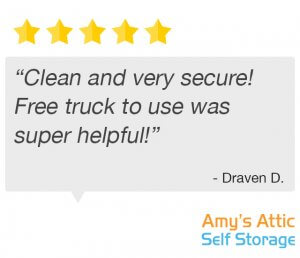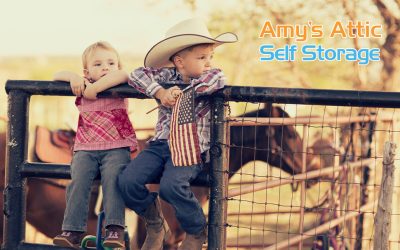Austin Kayak, 9705 Burnet Rd #102, Austin TXWhile many Texas households enjoy canoeing, fishing, or camping, the equipment these activities require can take up far more space than might be worthwhile for only being used for a certain portion of the year, when the weather is favorable. That makes personal storage units invaluable for when the off-season hits.
Finding a unit which will fit your equipment is the first hurdle, and the second is ensuring it is properly stored, so that when you need an item, you can trust that it will always be there. Backyard sheds may be an obvious choice, but they can get hot, cold, and crowded, and they may not be worth the high cost of refurbishment. These storage tips will help you keep your equipment in good condition, with minimal to no upkeep required.
Canoeing
The average canoe can range in size anywhere from 15 to 20 feet, let alone the space that oars, life vests, and other equipment can also take up! Its storage depends upon its size, material, and weight. Wood canoes or kayaks tend to be the heaviest, with metal materials coming shortly behind. Newer plastics and composites tend to be the lightest.
While the weight of a canoe may not seem important for storage, it’s useful to be familiar with how easily it can be maneuvered, what kind of mount it may need, and whether it can be carried and re-positioned by hand.
To maximize the longevity of a canoe or kayak, it’s best to store it out of the sun in a climate-controlled environment. Simply placing the vessel on the ground may be convenient, but it does not evenly distribute its weight, and can warp or scratch the sides. A cost-effective and far better storage method can be to buy several saw horses from any home improvement store and mount the canoe upside-down, with saw horses evenly spaced to distribute its weight.
As for the canoe accessories, such as life vests, oars, or rope, it’s a good idea to either hang those accessories nearby or organize them together in a storage bin or on a shelf. Storing them inside the canoe or kayak may seem obvious, but it may lead to the accessories being disorganized, and you might end up forgetting an important item.
Life vests should always be neatly straightened out and not placed under any heavy items. Crushing or deforming the padding in typical life vests can reduce their buoyancy.
Fishing
Ideal for the beautiful waterways and lakes of Central Texas, fishing is a classic American pastime which many families can enjoy at low cost. While most forms of bait are best left at home, poles, buckets, and other tools can be kept in storage between seasons so you know exactly where to find them when the time comes.
Fishing poles can be fragile, especially if stored haphazardly. Poles can bend and distort over time, reducing their effectiveness and increasing the chances your next prize catch might get away. For longer-term storage, it’s best to store the rods in a vertical wall rack or mount them horizontally. Removing the reels and storing them in a separate container or near their original rods is also a good practice.
Camping
Camping equipment can range from tents, sleeping bags, and hand tools to fire starter and first aid kits. Due to this variety, it’s a good idea to separate each item by category, then store them all together on the same shelf or container. Labeling each kit with exactly what is stored inside will make it far easier to pack exactly what you need in your car, RV, or backpack.
- Essentials – This includes the absolute basics for any camping trip, which often also happen to be the bulkiest items. Sleeping bags, tents, light sources, and navigation tools such as maps, GPS, or compasses. The tents and sleeping bag should be folded properly and stored in appropriate containers so they keep their shape. The stakes or poles of the tent should be stored in a separate container nearby, clearly labeled.
- Survival – It’s difficult to determine how a camping trip may go. Emergency tools such as whistles, flares, and medical supplies should be stored in a clear container and reviewed carefully before every trip, to ensure every item is in working order and not expired. Mess kits, including pots, pans, or fire starter kits should be stored similarly together in transparent containers for easy review. Survival tools such as knives, hatchets, or walking sticks should be mounted on a rack and placed in their holsters. These should always be kept in climate controlled environments to prevent damage from extreme heat or cold.
- Misc. – This includes items such as accessory chargers, spare socks, tent repair kits, or even entertainment items such as playing cards or travel board games.
Shopping
When it comes to survival and comfort in any camping situation, selecting high-quality equipment is a must. Two camping stores stand out above the rest.
- REI Dallas, 5929 E Northwest Hwy, Dallas TX
When it comes to getting a deal on a canoe, tents, or other camping and outdoors gear, REI is well-stocked and carries an expansive collection. The associates there will be sure to answer any additional questions you may have regarding the upkeep of your items in storage. - Austin Kayak, 9705 Burnet Rd #102, Austin TX
While a more kayak-focused store, knowing the store has specialized in kayaks and kayak accessories for so long should assure you of the quality of their products. They have kayaks for nearly any activity, and will be sure to assist you whether you’re a beginner or a pro.
Amy’s Attic Self Storage provides the most reliable, safe, and convenient personal storage service across Central Texas. Their units are climate-controlled and monitored at all hours to ensure that when the season comes, the supplies you need are always available.






